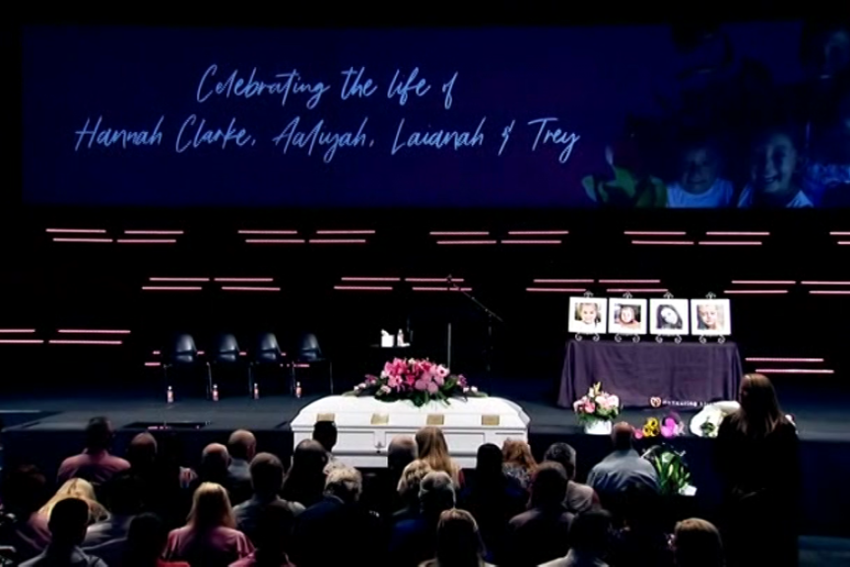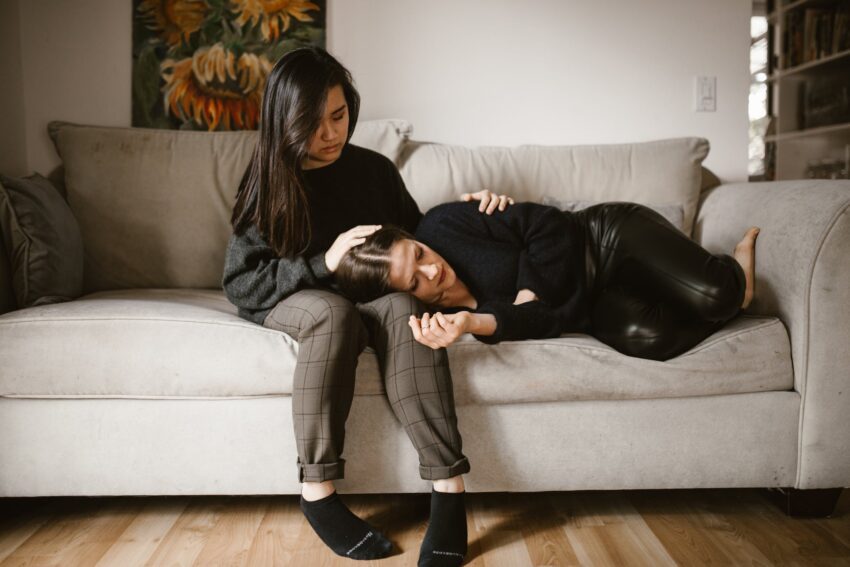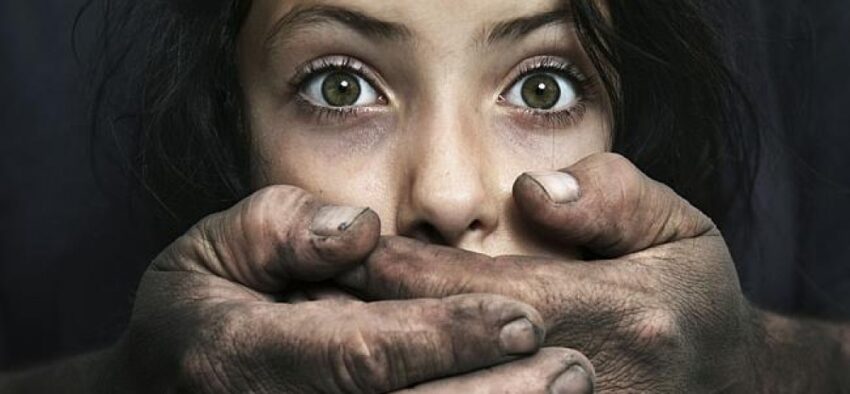How the tragic death of Hannah Clarke and her children shone a light on this often-hidden form of domestic abuse.
Content warning: this article discusses issues of coercive control and domestic violence which may be triggering for some readers.
On 19 February 2020, on a quiet suburban street in Brisbane, Hannah Clarke was preparing to drive her three children – six-year-old Aaliyah, Laianah, four, and three-year-old Trey – to school when she was ambushed by her estranged husband, Rowan Baxter.
Brandishing a knife, Baxter doused Hannah and her children with petrol before ordering her to drive to nearby bushland where he set fire to the car’s interior. Restrained by seatbelts in the rear of the vehicle, the children were burned alive. Hannah managed to escape the vehicle but died later that day in hospital. After watching his children die, Baxter stabbed himself to death.

The horrific death of Hannah Clarke and her children made international headlines and sparked a nationwide discussion about an often-hidden form of domestic abuse: coercive control.
Coercive control, otherwise known as intimate terrorism, is a pattern of controlling and manipulative behaviour. These behaviours may not be present at the beginning of a relationship. They may develop over time, masked by flattery and charm.
According to Women’s Safety NSW, coercive control is about exerting power over a victim, undermining their independence and self-worth through fear and intimidation. It can manifest in abusive behaviours like isolation, emotional manipulation, physical or sexual assault, surveillance, humiliation and degradation, and financial control.
In 2020, Women’s Safety NSW conducted a survey of 72 victim-survivors of domestic and family violence, revealing that all had experienced psychological control and manipulation in their relationship.
This year the Australian Institute of Criminology (AIC) surveyed 15,000 women about their experiences of physical or sexual violence and emotionally abusive, harassing and controlling behaviour. Women aged 25 to 34 experienced the highest rate of coercive control in their relationships.

The partners of 73 percent of women surveyed exhibited jealousy or suspicion in relation to their friends. 67 percent were constantly insulted and made to feel ashamed or were verbally abused and intimidated. In 65 percent of cases, abusive partners monitored the victim’s time and made them account for their whereabouts.
Sadly, just over one third of women who had experienced coercive control sought help.
Demonstrative of how insidious coercive control is, many women did not seek advice or support unless they had also experienced physical or sexual violence.
Anyone can experience coercive control. Here are 12 warning signs to watch out for:
- Isolation. A controlling partner will cut off or limit contact with friends of family. They may suggest shared phone or social media accounts, move the victim far away from family, spread lies about the victim to others, monitor phone calls, and convince the victim that their family dislikes them and doesn’t want to talk to them.
- Monitoring daily activity. Installation of cameras or recording devices, including in private areas such as the bedroom and bathroom.
- Denial of freedom and autonomy. Restriction of movement and independence, including not allowing a victim to go to work or school, restricting access to transportation, stalking, changing passwords on devices and social media accounts.
- Gaslighting. The abusive partner must always be right and will force the victim to acknowledge this through manipulation and lies.
- Name-calling and put-downs. These are designed to make the victim feel unimportant.
- Limiting access to money. Controlling a victim’s finances is a way to prevent them from leaving the relationship. It may include implementing a strict budget, limiting access to bank accounts, hiding money, stopping the victim from getting a credit card, and monitoring spending.
- Reinforcing traditional gender roles. An abusive partner will attempt to justify a woman’s role as homemaker and mother, often coercing the victim into doing all of the cleaning, cooking, and childcare.
- Weaponising the children. This can include telling children that the victim is a bad parent and belittling them in front of the children.
- Controlling health and body. The abusive partner may monitor eating and sleeping routines, require a victim to count calories or adhere to a strict exercise regime. They may control access to medical care and which prescribed medications a victim is allowed to take.
- Making jealous accusations. This is a way for a controlling partner to minimise a victim’s contact with others and make them feel guilty.
- Regulating sex. Abusers may demand how often they have sex with a victim, demand the victim take sexual photos or videos, or refuse to wear a condom.
- Threatening children or pets. This includes threatening to call social services to report neglect or abuse when there is none, threatening to make important decisions related to the children without the victim’s consent, and threatening to kidnap children or get rid of a pet.

Research has shown that victims of coercively controlling behaviour are attacked more frequently than victims of other types of domestic abuse and that coercive control is more likely to persist after separation.
Coercive control also has other negative consequences, beyond the violation of the human rights of women and children. It affects access to housing and employment, impairs the health and development of children, and is costly for women and the economy. In 2015-16, the annual cost of violence against women and children in Australia was estimated to be $22 billion.
The impact of coercive control on women is serious and may lead to injuries and homicide, poor mental health, reproductive health problems, and issues with alcohol and drug use.
Recently, there has been a focus on how Australia can best respond to the issue of coercive control, including calls for it to be criminalised.
Hannah Clarke had a domestic violence order (DVO) in place at the time of her death, after her ex-husband allegedly kidnapped their eldest daughter. He was due to appear in court on charges of breaching the DVO for allegedly assaulting Hannah weeks before he killed her.
But, for Hannah, a DVO wasn’t enough. Indeed, a 2018 national analysis of intimate partner homicides showed that about a quarter of men who killed current or former female partners were the subject of protection orders at the time.
This begs the question, if Australia had existing coercive control laws could Hannah’s life, and the lives of many other women, have been saved by earlier intervention?
At present, Tasmania is the only state that has criminalised aspects of coercive control: economic abuse and emotional abuse or intimidation. Other countries have already criminalised coercive control.
In 2015, the England and Wales became the first countries in the world to created a new criminal offence of ‘coercive and controlling behaviour’ designed to capture behaviour that does not include actual physical abuse. Scotland and Ireland followed suit in 2019, with Scotland seeing more than 400 crimes recorded in the first three months after the law was introduced.
For now, absent the criminalisation of coercive control in Australia, it is important for society to continue having a conversation about it. Child Family Community Australia (CFCA) has produced a webinar about how services can support women and help them respond to their partner’s controlling behaviours.
When having a conversation with a victim-survivor of coercive control it is important to:
- Have the conversation in a safe, comfortable space
- Ask if the victim is okay and actively listen to what they are saying
- Encourage them to seek help if needed and let them know they are supported
- Trust that they are the expert when it comes to their situation
- Check in with them regularly

Getting out of an abusive relationship can be difficult, even more so when there are children involved. But it is possible, with a bit of planning.
This includes maintaining communication with support systems – family, friends – whenever possible, regularly calling a domestic violence service, practicing how to get out safely, and making a safety plan.
There are a number of Australia-wide support services available to assist women subject to coercive control or domestic violence: 1800 RESPECT, Australian Childhood Foundation, LifeLine, Relationships Australia, and WESNET.



